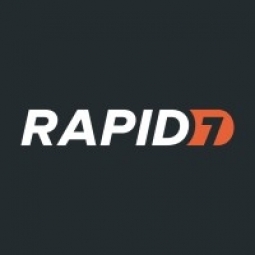Technology Category
- Cybersecurity & Privacy - Cloud Security
- Platform as a Service (PaaS) - Application Development Platforms
Applicable Industries
- Cities & Municipalities
- Education
Applicable Functions
- Human Resources
Use Cases
- Cybersecurity
- Tamper Detection
Services
- Cybersecurity Services
- Training
About The Customer
Blue Valley Unified School District is a large educational institution in Kansas, encompassing more than 23,000 students and 3,100 staff and teachers spread over five high schools, nine middle schools, and 21 elementary schools. The district is committed to integrating technology into its curriculum and instruction, with a 1:1 device-to-student ratio from kindergarten onwards. The district is also committed to providing safe learning environments for its students, protecting all district devices and online student activities through a cloud-based filtering system 24/7. However, the district faced significant security challenges, including ransomware attacks, visibility, and staffing, which led to the implementation of the Rapid7 Insight Platform.
The Challenge
Blue Valley Unified School District in Kansas, with over 23,000 students and 3,100 staff spread across 35 schools, was committed to providing a safe digital learning environment for its students. However, the district faced significant security challenges. In August 2019, the district was targeted by a successful ransomware attack, prompting a comprehensive security assessment of its vast application and network infrastructure. The district's cybersecurity team identified ransomware attacks, visibility, and staffing as the key challenges. Ransomware attacks were a constant threat, especially given the perception that public school districts have limited budgets and manpower. Visibility was another issue, with the small team struggling to maintain a comprehensive view of the district's security landscape. Staffing was also a concern, with many school districts unable to invest in the necessary staffing and software to deal with the demands of today's cybersecurity environment.
The Solution
To address these challenges, Blue Valley's cybersecurity engineer, Evan Nichols, implemented the Rapid7 Insight Platform. This included InsightIDR for detection and response, InsightVM for vulnerability management, and InsightConnect for automation. The platform was chosen for its ability to handle large amounts of data and perform much of the heavy lifting required in cybersecurity. The team started with detection, using InsightIDR to assess the district's security needs. InsightVM was used to scan data center assets as part of the district's shift to a zero-trust model. InsightConnect was used to address the district's manpower shortage by automating incident response. The Rapid7 Insight Platform provided the team with the visibility they needed to oversee and protect their challenging environment. It also allowed them to monitor a wide range of sources and perform custom parsing and log event sourcing faster than with other products.
Operational Impact
Quantitative Benefit

Case Study missing?
Start adding your own!
Register with your work email and create a new case study profile for your business.
Related Case Studies.

Case Study
Turning A Stadium Into A Smart Building
Honeywell created what it called the “intelligent system” for the National Stadium in Beijing, China, turning the venue for the opening and closing events at the 2008 Summer Olympics into a “smart building.” Designed by highly controversial artist Ai Weiwei, the “Bird’s Nest” remains one of the most impressive feats of stadium architecture in the world. The 250,000 square meter structure housed more than 100,000 athletes and spectators at a time. To accommodate such capacity, China turned to Honeywell’s EBI Integrated Building Management System to create an integrated “intelligent system” for improved building security, safety and energy efficiency.
.png)
Case Study
Smart Street Light Network (Copenhagen)
Key stakeholders are taking a comprehensive approach to rethinking smart city innovation. City leaders have collaborated through partnerships involving government, research institutions and solution providers. The Copenhagen Solutions Lab is one of the leading organizations at the forefront of this movement. By bringing together manufacturers with municipal buyers, the Copenhagen Solutions Lab has catalyzed the development and deployment of next-generation smart city innovations. Copenhagen is leveraging this unique approach to accelerate the implementation of smart city solutions. One of the primary focus areas is LED street lighting.

Case Study
Buoy Status Monitoring with LoRa
The Netherlands are well-known for their inland waterways, canals, sluices and of course port activities. The Dutch Ministry of Infrastructure indicates that there are thousands of buoys and fixed items in and near water environments that would profit from IoT monitoring. One of the problems with buoys for example, is that they get hit by ships and the anchor cable breaks. Without connectivity, it takes quite some time to find out that something has happened with that buoy. Not to mention the costs of renting a boat to go to the buoy to fix it. Another important issue, is that there is no real-time monitoring of the buoys at this moment. Only by physically visiting the object on the water, one gains insight in its status.

Case Study
China Mobile Smart Parking
Smart Parking, powered by NB-IoT technology, is making it easier for drivers to find free parking spots. Cities can better manage their parking assets and maximize the revenue available to them as a result. Drivers searching for parking create congestion and pollution by circling and hunting for available parking. Smart Parking services are able to significantly ease these problems by guiding a driver directly to a parking space.

Case Study
Barcelona Case Study
Barcelona’s heavy traffic and its associated high levels of pollution were the primary factors that motivated some companies and universities to work on strategies for improving traffic in the city centre. Bitcarrier is one of the technologies involved in the In4Mo Project, whose main objective is to develop the applications that form the core of smart mobility, one of the fundamental pillars of the smart city concept.




